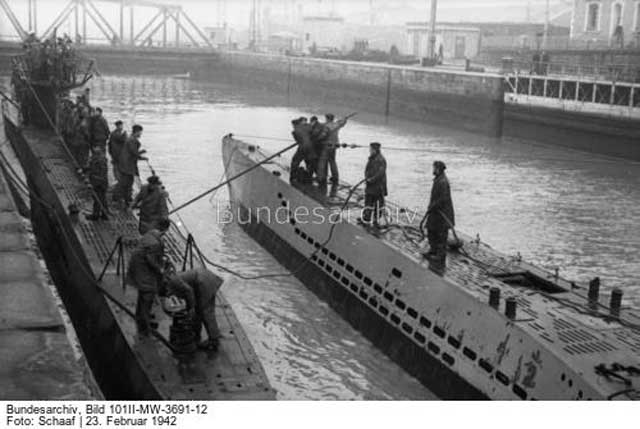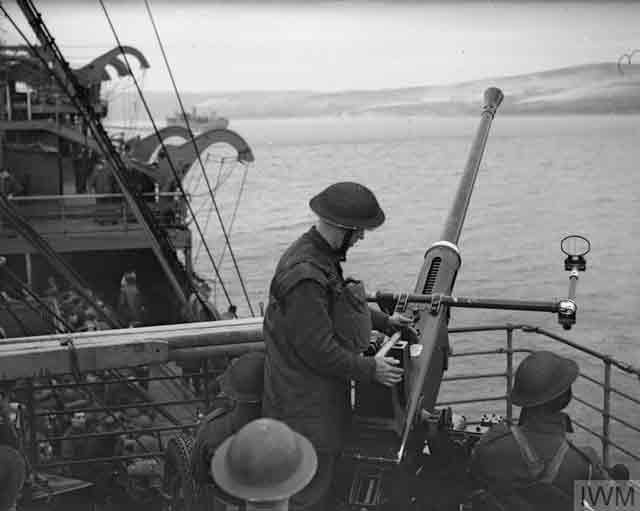Tuesday 29 July 1941
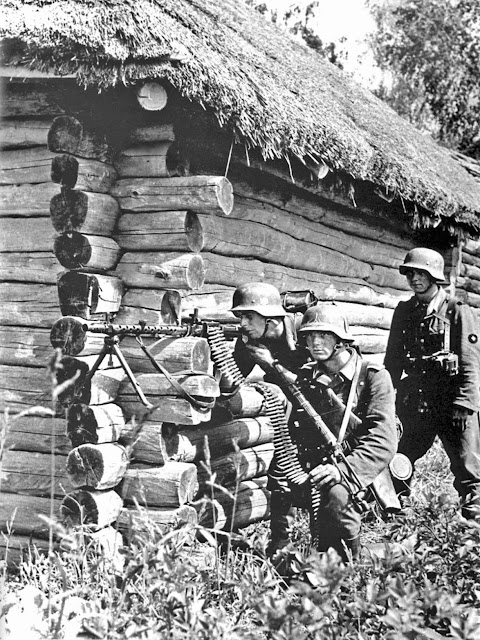 |
| German soldiers with an MG 34 (Maschinengewehr 34) recoil-operated machine gun. They are taking cover on the side of a house in Rahachow, July 1941. |
Eastern Front: SS Battalion Kurt "Panzer" Meyer greets the dawn of
29 July 1941 in an unnamed battlefield that has been "hot" all night long. Reflecting an increasingly gloomy outlook by ordinary soldiers, he later recalls:
I wanted to scream, to curse the whole insanity of war, but I tumbled into the next hole and returned the fire of a Russian who was lying behind a bush not fifty meters away on the other side of the road. Glancing at the prostrate, clawing humanity around me, the bloody fields of Verdun appeared before me in my thoughts.
Meyer notes that the Soviets have left, but there are dead bodies from both sides strewn all about.
In the Far North sector, the German 36 Corps (General Hans Feige) once again attempts to break Soviet resistance east of Salla to continue the advance on the vital Murmansk railway. As did the attempt on the 27, this one completely fails. The fruitless attacks have been extremely costly in terms of lives lost on both sides, with the Germans taking 5000 casualties in the last month in this sector alone. After this, General Nikolaus von Falkenhorst in Army Group Norway accepts the inevitable and calls off further attacks until the situation changes.
In the Army Group North sector, the German 16th Army attacks in the direction of Velikiye Luki while the 18th Army continues clearing out Estonia.
In the Army Group Center sector, German forces encircling parts of three trapped armies in the Smolensk area withstand strong Soviet attempts to open the pocket. Soviet 30th Army counterattacks in the northern part of the pocket, but is stopped by General Hoth's 3rd Panzer Group. Soviet 4th Army attacks General Guderian's Panzer Group 2 in the Yelnya area. At 19:00, General Timoshenko at Western Front orders 20th Army (General Kurochkin) to retake Smolensk. Kurochkin dutifully complies, but the attack fails and the Soviet troops withdraw with heavy casualties. A local counterattack by General Rokossovsky's 101st Tank Division using KV tanks does recapture Iartsevo temporarily.
In the Army Group South sector, General Ewald von Kleist sends XVIII Motorized Corps of his Panzer Group I toward Pervomaisk. Meanwhile, the German 6th Army attacks directly toward Kyiv, but, facing heavy resistance, sidestep to the south of the city to envelop the defenders. The Soviets have 1.5 million men in the vicinity of Uman, but they are slowly being compressed into a smaller and smaller area.
 |
| "Stirling N3663/MG-H of No 7 Squadron, on display at Newmarket Heath, Suffolk, during a visit by King Peter of Yugoslavia, 29 July 1941. A typical bomb load is on view beneath the aircraft for the King's inspection." © IWM (CH 3175). |
European Air Operations: The weather continues to be poor over northwest Europe, with heavy cloud cover. It begins clearing up during the night, but there are no operations today.
RAF No. 81 Squadron reforms as a Hurricane-equipped fighter squadron. It is designated for transfer to the Soviet Union aboard an aircraft carrier in September 1941.
Battle of the Baltic: German 338-ton freighter Leontes hits a mine and sinks near Ventspils (Windau), Latvia.
Soviet auxiliary minelayer Syzran and minesweeper Zaryad are both sunk near the Ristna Lighthouse, Estonia of unknown causes.
 |
| U-331. |
Battle of the Atlantic: The German U-boat fleet is still shadowing British Convoy OG-69. However, U-331 (Kptlt. Hans-Diedrich von Tiesenhausen), on its first patrol out of Kiel, is spotted by the British escorts and subjected to a depth charge attack, preventing an attack. There are no other attacks today.
Operation EF, the British raid on Kirkenes and Petsamo, continues steaming toward its destination. Since there is daylight 24 hours a day at the higher latitudes, the Royal Navy armada steaming from Iceland is easy to spot, and indeed the Germans do spot it today far from the coast. A Kriegsmarine destroyer force (Richard Beitzen, Friedrich Eckholdt, Karl Galster and Hermann Schoemann) is conducting a sweep near the Kara Straits when it receives word that a massive British fleet including aircraft carriers is nearby. The destroyers quickly hurry back to port. The British plan their raid for the early hours of 30 July and complete their refueling today.
Force A of British Operation FB, a raid on Spitsbergen, Norway, departs from Seidlsfjord, Iceland.
The Luftwaffe bombs and damages 2816-ton British freighter Adam's Beck in the Tyne. The Adam's Beck is so badly damaged that it sinks on the 30th. There is one death.
German 1890-ton freighter Bernhard is sunk when it collides with 1535-ton Swedish freighter Frode near Nordeney, northwestern Germany.
German raider Orion (Schiff 36, FKpt. Weyher), operating midway between Africa and South America due east of Puerto Rico, captures 5792-ton British freighter Chaucer. The crew survives and become prisoners of war. The sinking is a miserable affair for the German crew because they have to fire the extraordinary number of ten torpedoes, but five miss (perhaps with internal guidance issues) and five fail to detonate. Frustrated, Weyher finally has the men man the deck gun and sink the Chaucer with gunfire. Faulty torpedoes have plagued the U-boat since the start of the war.
Royal Navy submarine HMS Ultimatum (Lt. Peter R. H. Harrison) is commissioned and anti-submarine warfare trawler Buster is launched.
 |
| The Lviv pogroms at the city of Lwów, the occupied Republic of Poland (now Lviv, Ukraine), which took place from 30 June to 2 July and 25–29 July 1941, end today. An estimated 6000 people perish. |
Battle of the Mediterranean: There are still small groups of British soldiers on Crete despite the complete success of Operation Mercury. They have been supported by Greek villagers and evade capture by hiding out in caves which were prepared as air raid shelters prior to the invasion. Today, 78 of these troops (67 British and 11 Greek) are picked up by submarine HMS Thrasher and taken to Alexandria, two months after the island fell to the Germans.
British Middle East Commander Claude Auchinleck and his RAF commander, Air Marshal Tedder, arrive in London by air for consultations about future operations.
An Italian bomber spots Royal Navy submarine HMS Olympus a few miles from Cavoli Light, southeastern Sardinia. A near miss damages the Olympus. The submarine is leaking and cannot submerge, but it makes it back to Gibraltar after a harrowing journey of several days.
Luftwaffe Junkers Ju 87 Stukas of I,/STG 1 and accompanying Italian Stukas of No 239 Squadron bomb and sink 372-ton British landing craft LCT-8 and Lighter A-8 east of Bardia. Some sources place this incident on the 28th.
Royal Navy destroyer HMS Hotspur and Australian destroyer HMAS Vendetta load weary Australian troops at Tobruk before dawn and take them to Mersa Matruh for rest and recuperation.
An Axis convoy of three large troopships (Neptunia, Oceania, and Marco Polo) departs from Tripoli bound for Naples. It is escorted by five destroyers and a torpedo boat. Another return of four freighters also departs with a four-destroyer escort. Another, third, convoy of only one freighter, 6343-ton Francesco Barbaro, also departs from Tripoli. Generally, transports can steam faster than ordinary freighters, and not all freighters can proceed at the same speed, thus the desirability of having small convoys of different speeds rather than one large (and slow for all) convoy. Faster convoys are usually considered safer than slower ones, so faster ship masters greatly prefer traveling with other fast ships rather than slowing down for slower freighters.
An Axis supply convoy of three Italian ships and one German freighter departs from Naples bound for Tripoli.
At Malta, the garrison receives a personal note of congratulations from the Chief of the Imperial General Staff in London for frustrating the Italian motorboat attack on the 26th. The War Office asks for further details of the action, perhaps because Italian radio in Rome is touting it as an excellent feat of arms by the Regia Marina despite the absolute failure of its mission.
 |
| General der Gebirgstruppe Eduard Dietl (Kommandierender General Gebirgskorps Norwegen) with German and Finnish officers in the northern Russian tundra, July 1941. |
Ecuadorian/Peruvian Relations: Although both sides are under intense pressure from the United States and neighbors to end their border war, ceasefire negotiations remain incomplete. Thus, Peru orders its military to continue advancing into Ecuador.
US/Japanese Relations: The US State Department issues a stinging denunciation of the Japanese occupation of southern French Indochina, noting that it obviously is "for the purpose of further and more obvious movements of conquest in adjacent areas." It goes on to note that these actions "jeopardize the procurement by the United States of essential materials ... for the normal economy of this country...." Of course, the Japanese at this point aren not too concerned about what the Americans want, considering that the Roosevelt Administration has slapped extremely tough sanctions on Japan that are virtually forcing it to seek out new sources of supply in the south.
German/Norwegian Relations: The first 300 Norwegian volunteers for the "Legion Norwegen" arrive in Kiel, Germany and are sent to Fallingbostel Training Camp.
 |
| German Luftpost propaganda leaflet, 29 July 1941 (psywar.org). |
German Military: General der Flakartillerie Ludwig Karl Hermann von Schröder perishes in an air crash near Hohenlychen (north of Berlin). At the time of his death, he is the military commander of Serbia and section commander of the Schutzstaffel (SS). Previously, Schröder served in the German navy as a Vice-Admiral, then transferred to the Luftwaffe in 1937 when it was rapidly expanding and drawing officers from the other branches of the Wehrmacht. General von Schröder is perhaps most notorious for instituting the practice of forcing Jews and Gypsies in Serbia to identify themselves by wearing a yellow armband, along with various other repressive measures against them such as the registration of Jewish assets. These practices rapidly spread throughout the Reich and lead to the infamous Yellow Star of David badge.
Soviet Military: General Georgy Zhukov abruptly is removed from his post of Chief of the General Staff. Stalin apparently (even Zhukov isn't completely certain as to the reason, as indicated in his memoirs) is upset that Zhukov suggested a retreat by the 1.5 million Soviet troops defending Kiev. Zhukov rightly sees a danger of encirclement at Kiev, but Stalin is determined to make a stand there. On the 30th, Stalin, after cooling down, finds a new job for Zhukov as head of the newly formed Reserve Front which is tasked with counteroffensive operations in the direction of Yelnya. As Zhukov later comments, the difference in power between Stalin and any general is similar to that between a Field Marshal and the lowliest private.
The new Soviet Chief of the General Staff is Marshal Boris Shaposhnikov.
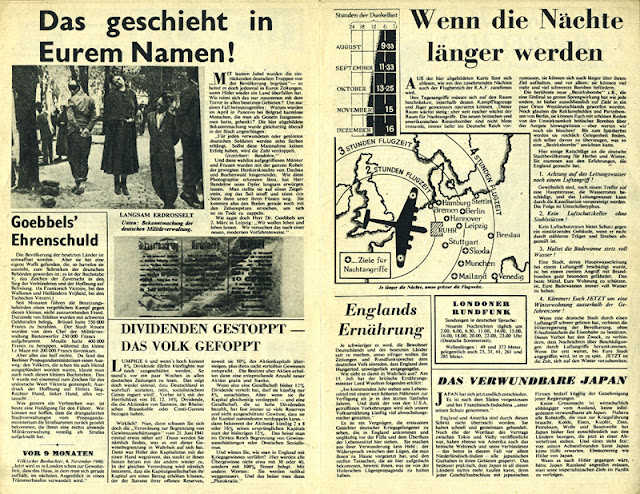 |
| German Luftpost propaganda leaflet, 29 July 1941 (psywar.org). |
US Military: Heretofore, US aircraft carriers have defended themselves by maintaining standing air patrols. Today, US Secretary of the Navy Frank Knox orders the installation of radar plots to serve as "the brains of the organization." The navy plans the first installation aboard USS Wasp (CV-7).
USAF General Lewis H. Brereton takes command of the Third Air Force at MacDill Field, Florida.
Admiral Husband Kimmel, CINCPAC, is informed by Joseph Rochefort that the danger of immediate war with Japan due to the imposition of sanctions has passed. This is because there are signs that the Japanese Fleet is heading in the direction of Japan, not the United States. In fact, the Japanese Fleet is not even at sea.
 |
| Steel, four-masted barque "Pamir" approaches Wellington, New Zealand, 29 July 1941. A Finnish ship, the government seizes Pamir soon after its arrival due to the outbreak of hostilities between Finland and (now) British ally the USSR. |
British Government: British Prime Minister Winston Churchill makes a
speech before the House of Commons. The majority of his speech concerns munitions production, which he assures the House is in good order despite rumors to the contrary. He emphasizes that war production has been dispersed, noting, "I can give instances of dispersion of twenty, thirty or forty sub-centers." He winds up with a reassuring summary of the war situation, noting that "German air superiority has been broken" and that the Battle of the Atlantic is "moving progressively in our favor."
US Government: The State Department issues a list of blocked foreign nationals. They are barred from entry to the United States for engaging in activities deemed subversive and anti-American.
French Indochina: Japanese troops pour into southern French Indochina with the permission of the Vichy French regime. The French have given the Japanese permission to defend the colony in the event of foreign attack. The parties are operating under a "Common Defense" agreement signed by Deputy-Premier Admiral Darlan and Japanese Ambassador Kato in Paris. The vast majority of Japanese troops at this time are in Saigon, but they soon fan out to other strategic sites in Indochina and neighboring Cambodia.
The Common Defense agreement states, in typical Japanese diplomatic language:
Recognizing in consequence that should the security of French Indochina be menaced, Japan would have reason to consider the general tranquility in East Asia and its own security endangered.
Of course, Japan at this point is the one threatening the "general tranquility" of the region.
 |
| Saint Maximilian Maria Kolbe. |
Holocaust: Axis occupation troops in the Belgrade vicinity execute 122 men purportedly for being in the Resistance - they just so happen also to be Communists and Jews.
Germans at a mental hospital at Lodz, Poland take 40 patients out to a forest and execute them.
At Auschwitz, ten prisoners disappear from the camp. SS-Hauptsturmführer Karl Fritzsch, the deputy camp commander, decides to pick 10 men to be starved to death in an underground bunker to discourage further escape attempts. Fellow inmate Catholic priest Maximilian Maria Kolbe, is not selected. However, noticing that one of the men so selected is in despair, Kolbe steps forward to take the man's place and ultimately perishes on 14 August 1941. Kolbe will be canonized for this act by Pope John Paul II on 10 October 1982.
Einsatzcommando 3 executes 257 men, 254 of them Jewish, in Raseiniai (according to the Jäger Report).
The second wave of massacres of Jews in Lwow (Lviv), Ukraine ends. An estimated 6,000 Jews are thought to have perished in June/July 1941 from these pogroms.
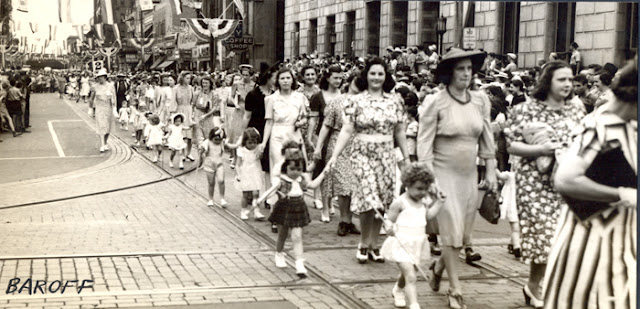 |
| A "Baby Parade" held in Scranton, Pennsylvania on 29 July 1941. This event is part of the Scranton Diamond Jubilee and Centennial Celebration. Awards are given in several categories, including Prettiest Girl and Handsomest Boy. (Times-Tribune Archives). |
Canadian Homefront: The controversial Arvida strike ends when Munitions and Supply Minister C.D. Howe is permitted by a change in the Defence of Canada Regulations to call out the troops. The strike is later found to have been illegal and caused by routine worker concerns about pay and working conditions.
Italian Homefront: Retired opera singer Erminia Borghi-Mamo passes away in Bologna, Italy.
American Homefront: British actor James Stephenson passes away from a heart attack in Pacific Palisades, California. His career began in 1937 at age 48, an unusual age at which to become a film star, and especially so because he had little previous acting experience. Stephenson's roles included parts in "Beau Geste" (1939), "The Sea Hawk" (1940), and "Shining Victory" (1940). Stephenson earns one Academy Award nomination for "The Letter" (1940). He is interred in Glendale's Forest Lawn Memorial Park.
Silent film actor Charles Murray, who appeared in 283 films between 1912 and 1938, passes away in Los Angeles at the age of 69. Murray appeared in the first 'The Wizard of Oz" in 1925. He has a star on the Hollywood Walk of Fame at 1725 Vine Street.
Future History: David Hattersley Warner is born in Manchester, Lancashire, England. He becomes a leading stage actor beginning in January 1962 and makes his feature film debut in "Tom Jones" (1963). He goes on to a distinguished acting career and is perhaps best known for his appearances in several films concerning RMS Titanic (including "Titanic" (1997) and the "Star Trek" franchise, but his credits are numerous and stellar. David Warner remains a working actor as of this writing in 2018.
 |
| A German-Ukrainian parade in Ivano-Frankivsk in July 1941. Many Ukrainians at this time see the Germans as liberators from Russian domination. |
July 1941July 1, 1941: US TV Broadcasting StartsJuly 2, 1941: MAUD ReportJuly 3, 1941: Stalin SpeaksJuly 4, 1941: Pogroms in Eastern EuropeJuly 5, 1941: Germans on ScheduleJuly 6, 1941: Australians Attack DamourJuly 7, 1941: US Marines in IcelandJuly 8, 1941: Flying Fortresses In ActionJuly 9, 1941: British Take DamourJuly 10, 1941: Sword and Scabbard OrderJuly 11, 1941: Cease-fire in Syria and LebanonJuly 12, 1941: Anglo/Russian Assistance PactJuly 13, 1941: Uprising in MontenegroJuly 14, 1941: Katyusha Rocket Launchers in ActionJuly 15, 1941: Smolensk FallsJuly 16, 1941: Stalin's Son CapturedJuly 17, 1941: Heydrich Orders Mass ExecutionsJuly 18, 1941: Twin Pimples RaidJuly 19, 1941: V for VictoryJuly 20, 1941: The Man Who Wouldn't ShootJuly 21, 1941: Moscow in FlamesJuly 22, 1941: Soviet Generals ExecutedJuly 23, 1941: Secret Plan JB 355July 24, 1941: Operation SunriseJuly 25, 1941: US Naval AlertJuly 26, 1941: Italian E-Boat Attack on MaltaJuly 27, 1941: MacArthur ReturnsJuly 28, 1941: Auschwitz ExterminationsJuly 29, 1941: Rescue From CreteJuly 30, 1941: Raid on Petsamo and KirkenesJuly 31, 1941: Final Solution Order2020



